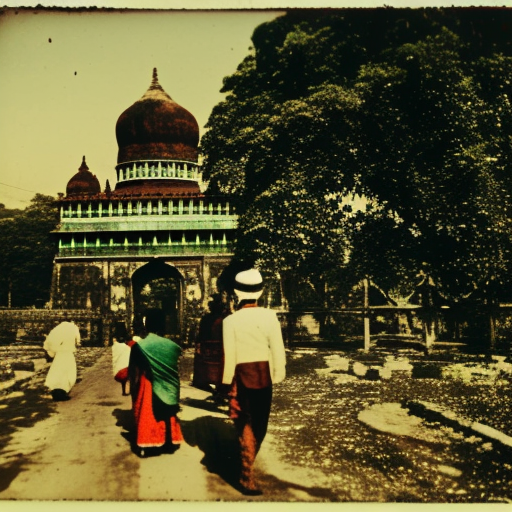Siege of Cawnpore: A Brutal Chapter in the Indian Rebellion of 1857
The Siege of Cawnpore, also known as the Massacre of Cawnpore, was a significant event during the Indian Rebellion of 1857. It took place in the city of Cawnpore (now Kanpur) in present-day Uttar Pradesh, India. The siege lasted from June 6 to June 27, 1857, and resulted in the deaths of hundreds of British civilians and Indian soldiers.
Background:
The Indian Rebellion of 1857 was a widespread uprising against British colonial rule in India. The rebellion was fueled by various factors, including resentment towards British policies, the introduction of new rifles that required soldiers to bite off the ends of cartridges greased with animal fat (offending both Hindu and Muslim soldiers), and the growing influence of Indian rulers who had lost power to the British.
The Siege:
In May 1857, rebel forces led by Nana Sahib, a prominent Indian leader, captured the British garrison in Cawnpore. The British civilians, including women and children, were taken hostage and confined to a small area known as the Bibighar. The rebels demanded a large ransom and safe passage for the hostages.
The British, under the leadership of General Hugh Wheeler, were besieged in the entrenchments of the Cawnpore garrison. The situation quickly deteriorated as the British faced food shortages, disease, and constant attacks from the rebels. Despite their desperate situation, the British managed to repel several rebel assaults.
The Betrayal:
On June 25, 1857, Nana Sahib agreed to a truce with the British and offered them safe passage to Allahabad. The British, including women and children, were loaded onto boats to begin their journey. However, as the boats reached midstream on the Ganges River, they were attacked by rebel forces.
The British were caught off guard and faced heavy gunfire from the riverbanks. The boats were quickly overwhelmed, and many of the passengers were killed or drowned. Those who survived were taken back to Cawnpore and confined to the Bibighar once again.
The Massacre:
The situation in the Bibighar quickly deteriorated as the rebels became increasingly hostile towards the British hostages. On June 27, 1857, the rebels launched a final assault on the Bibighar. The British fought valiantly but were outnumbered and outgunned.
In the ensuing chaos, the rebels overpowered the British and massacred them. Men, women, and children were brutally killed, and their bodies were thrown into a nearby well. The exact number of casualties is uncertain, but it is estimated that around 200 British civilians were killed during the massacre.
Aftermath:
The Siege of Cawnpore and the subsequent massacre shocked the British and further fueled their determination to suppress the rebellion. The British forces, under the command of General Henry Havelock and later General Colin Campbell, launched a series of offensives to retake Cawnpore.
After several months of intense fighting, the British successfully recaptured Cawnpore in December 1857. Nana Sahib and his forces were forced to retreat, and many of the rebel leaders were captured or killed. The British took revenge for the massacre by executing several rebel leaders and destroying the Bibighar.
The Siege of Cawnpore was a turning point in the Indian Rebellion of 1857. It demonstrated the brutality of the conflict and the deep divisions between the British and Indian populations. The event also had a profound impact on British public opinion and further solidified their resolve to maintain control over India.












